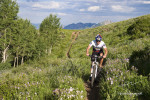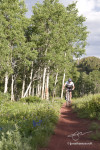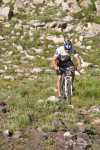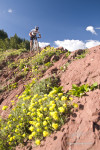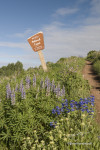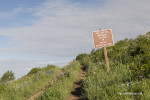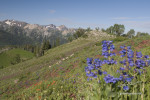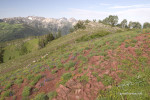Guest Editorial
By Carl Fisher, Executive Director of Save Our Canyons
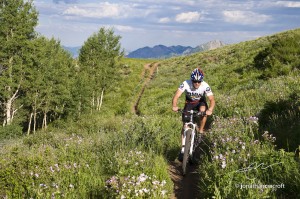
A few years back when Save Our Canyons was working with the mountain bike community on drawing the boundaries for our Wilderness Proposal we all agreed the Wasatch Crest Trail needed to remain open to bikes, but the lands adjacent to the trail must be protected. Much of this dialog centered around the fact that at some point all of us (mountain bikers, conservationists, and mountain biking conservationists) knew this epic trail would be threatened by development.
Fast forward to this past July (2011), when Ted Wilson stepped down as the Governor’s Environmental Advisor and took a job with Talisker Corporation, the Canadian “global real estate” giant who owns the Canyons Resort, parts of Deer Valley, and apparently the land underneath Park City Mountain Resort, that the tides of significant change were upon the Central Wasatch and the Wasatch Crest. What we didn’t realize was that only a few short months after taking the position, he had quietly convinced Rep. Rob Bishop, Rep. Jason Chaffetz, Sen. Mike Lee, and Sen. Orrin Hatch to sponsor legislation to sell off 30 acres of US Forest Service and Salt Lake City Protected Watershed land inside Rep. Jim Matheson’s congressional district. The land on the chopping block runs through the Willow drainage in Big Cottonwood Canyon where near the top of the ridge, the alignment would cross one of the state’s premier mountain bike trails, the Wasatch Crest. The Wasatch Range Recreation Access Enhancement Act (HR 3452, S 1883) was born of greed and hastiness with no public input, much to the consternation of local government officials who are collaboratively trying to find solutions to protect these heavily used lands, manage them for multiple uses, not to mention our watershed.
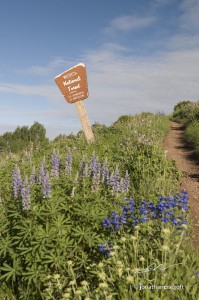
While Talisker says their proposal is nothing but noble and the saving grace of the Wasatch, Save Our Canyons and a vast majority of the general populus respectfully disagree. First, vehicular visits in the Cottonwood Canyons certainly play a role in the degradation of these natural areas, so too does the rampant destruction and habitat fragmentation caused by ski area expansion. Second, Talisker has stated this is in part, a marketing ploy, aimed at getting more skiers to the state, great, but with more skiers, comes more traffic only furthering the impacts to these heavily used environments. Third, SkiLink is ineffective and supremely costly. In January, we tested it. It took us nearly two-hours to ride five lifts doing a minimal amount of skiing only to get to the base of where SkiLink would begin and cost each skier $96 (Canyons day-pass 2012) to ride the Talisker Transit Authority. (See video at http://vimeo.com/35722395)
It is true the ski industry as a whole in the state contributes approximately 1% of State GDP, however little attention is paid to the other amount of money generated by buying mountain bikes, climbing gear, backcountry skiing gear, running shoes, hiking boots, etc, etc. The Wasatch is home to world class skiing, anyone who lives here knows that. What makes it world class is not only our resorts, but also our access to unmatched backcountry terrain. Where else in the world can you leave the valley and be at a resort or a trailhead in 30 minutes? Then there are the other three seasons of the year where people retreat to the hills and enjoy all the other activities the Wasatch has to offer. The biggest difference between the backcountry recreation economy and the resort economy is that the resort economy has become more about selling real estate than providing a recreation experience. See for yourself what the Talisker Club is all about on their website (http://taliskerclub.com/) skiing is merely an amenity, much like a condo offers a fitness center.
One of the most frustrating elements of the SkiLink legislation is that it completely circumvents the public process and existing land use plans that recognize this concept of multiple use of our public lands. Currently, the 2003 Wasatch-Cache National Forest Plan does not allow for ski area expansions onto adjacent “highly valued public lands” and served as the basis for denial of the 2009 Solitude Silverfork expansion. Though the Canyons nor Solitude, ever submitted a formal proposal to the US Forest Service, the agency said based on the information they heard from the resorts they would have to run it through their processes as Ski Area expansion, not as a transportation alternative as proposed. Too, local land use plans like the Salt Lake Canyons Master Plan support the resorts in their current configuration and recognize the importance of the Wasatch as a gathering place for multiple uses. According to information gathered in the 2010 Wasatch Canyons Tomorrow process, the public sentiment is inline with the policy laid out in these land use plans. The report states 94% of respondents wanted to see no further expansion outside of existing Ski Area Permit boundaries. Survey responses were then validated by a random Dan Jones & Associates poll.
There are numerous issues with this project ranging from visual impacts on up to the process (or lack thereof) to selling heavily used public lands. The Wasatch Crest Trail is one of the state’s premier mountain bike trails. SkiLink would bisect this classic trail, turning it into private property, about 1.5 miles east of the spine. What does this mean for the fate of our beloved Crest? Well it’s future is uncertain. Could the Canyons fence of portions of the trail, possibly, since restricting access is a god-given right to property owners. Could we be weaving through trophy homes rather than aspen groves? This option is more likely than closure, but experiences like that are becoming the norm for alpine rides. Rumor has it that Solitude is going to be acquired by Talisker, furthering the suspicion that this is more about real estate and ski area expansion.
I personally have always reveled at the scenic beauty of the Crest Trail which remains free from overhead obstructions from Scotts Pass to the bottom of Mill Creek Canyon. I too, think how lucky we are to have public lands preventing the encroaching cancer of trophy homes and ski infrastructure from spilling over the ridgeline from the Canyons into Salt Lake County. We need all users, hikers, bikers, skiers, hunters, bird watchers, photographers and the many other multiple users who share this place to join forces and loudly oppose the SkiLink project. These lands belong to all of us, and they need to remain that way to protect our quality of life for today and tomorrow. Please write or call your congressmen and senators urging thier staunch opposition to the privitization of public assets so the Wasatch Crest can remain unmarred and open for the many users who frequent the area.
Carl Fisher is Executive Director of Save Our Canyons, a local non-profit dedicated to protecting the wildness and beauty of the Wasatch mountains, canyons and foothills. More information on this and other projects confronting the Wasatch can be viewed at www.saveourcanyons.org or www.facebook.com/saveourcanyons
Photo Gallery of the Wasatch Crest Trail by Jonathan Cracroft, jonathancracroft.com.

